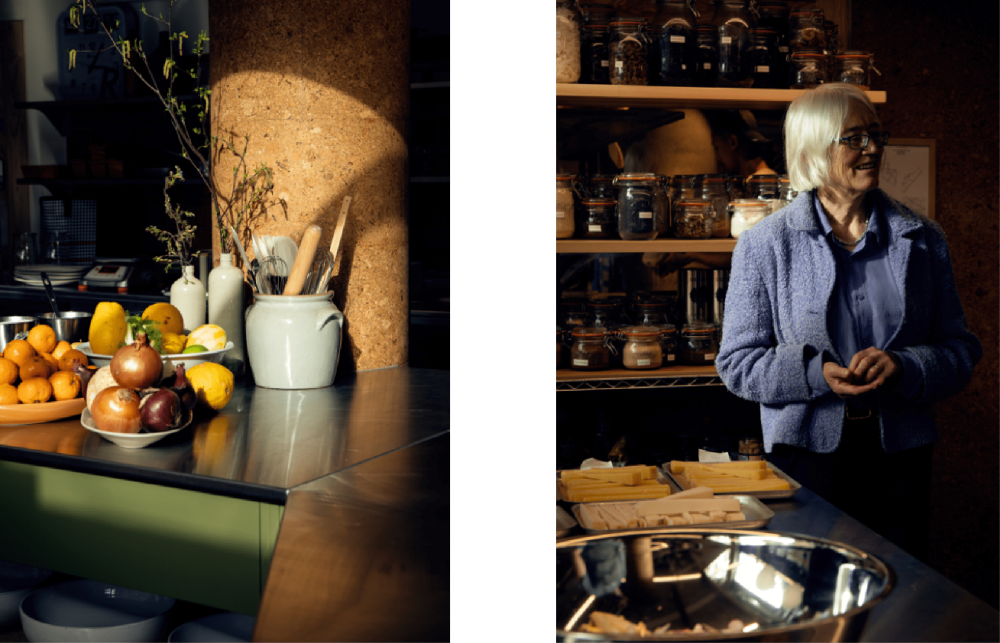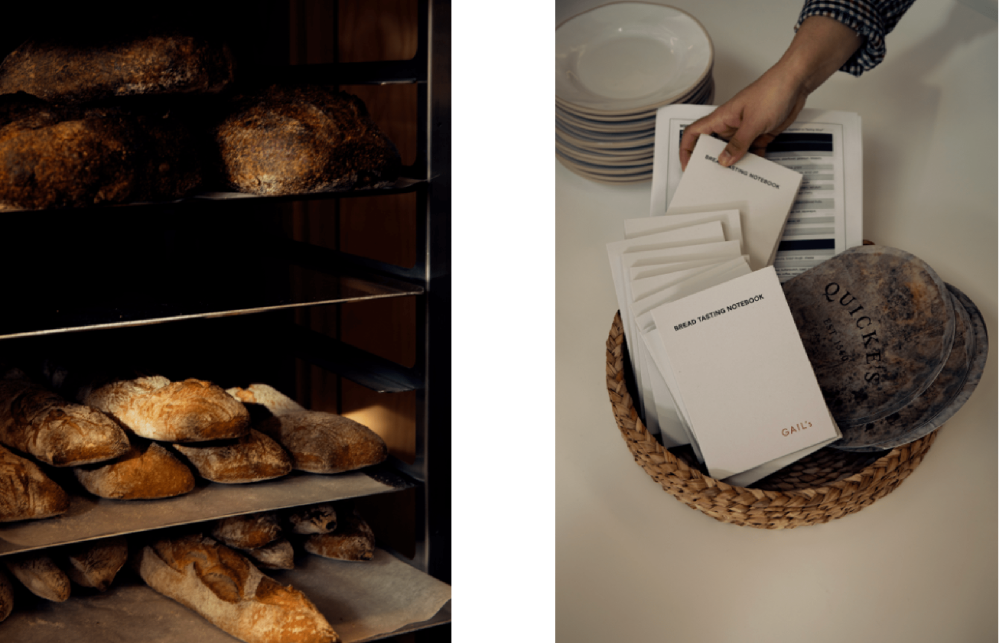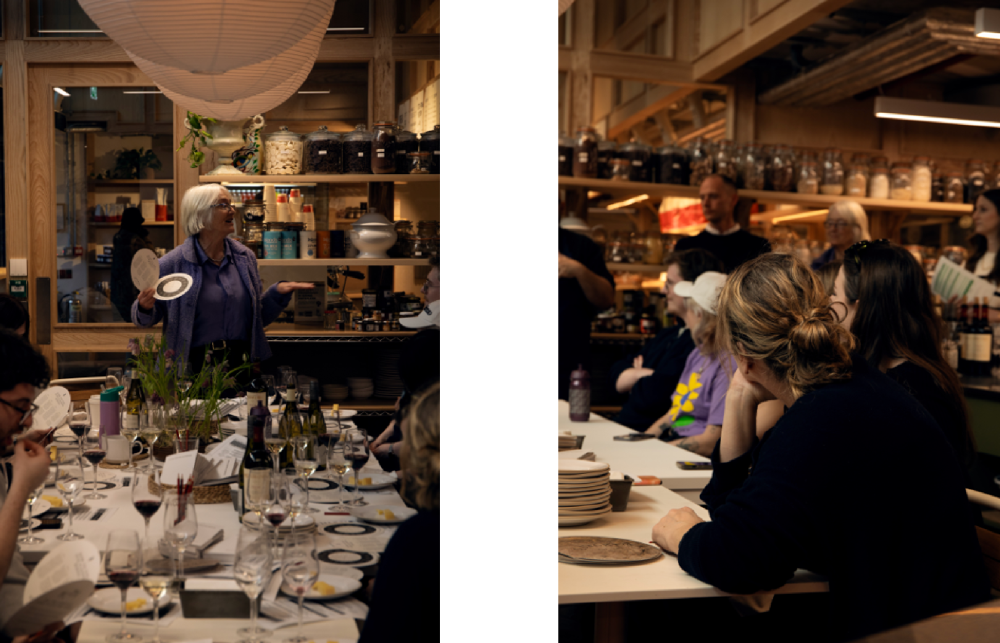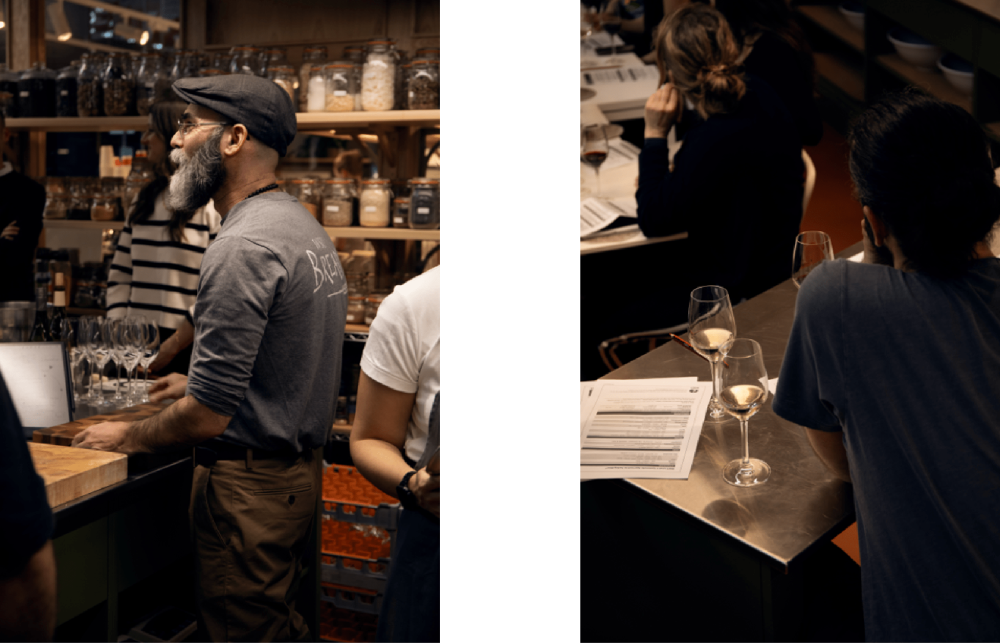Words Charlie Monaghan
Photography Hector Marshall
“The limits of my language mean the limits of my world,” said philosopher Ludwig Wittgenstein, and while his exact meaning is debated, the sentiment is clear: words are important.
It’s a thought that’s surfaced in our minds recently as we’ve emerged from a busy period of baking development to evolve our formulas and tweaked the way we bake. As we came to the end of it, we realised that the conversations that inform our baking are rich and expansive, but the ones we have about the actual bread? Well, when it came to talking about their nuances and complexities, we found ourselves rather… tongue-tied.
“The limits of my language mean the limits of my world” – Ludwig Wittgenstein
As Wittgenstein taught, words open worlds. What we found we needed were more words to talk about our bread, based on our senses. Why? Because in the context of food, developing language for describing what you experience with your senses means a conversation about quality can move beyond ‘I like it’ or ‘I don’t’ towards something more structured and rigorous. The worlds of wine and cheese have shown this masterfully.
Pictured above, clockwise from top left: our creative studio bathed in early spring sunshine. Mary Quicke arrives at GAIL’s HQ after travelling up from her farm in Devon, where her family have been since 1540. A selection of breads that have recently been refreshed as part of our project to reconsider our bread formulas from the perspective of nutrition, flavour and sustainability over the next two years. Some bread tasting cards we developed for the session sit beside Quicke’s Tasting Flavour Wheel.
Luckily, in our community of suppliers we happen to know wine and cheese experts very well. So, on a recent spring afternoon, we invited friends and long-term partners Mary Quicke of Quicke’s Cheese and Lucy Wright of Buchanans Cheesemonger to share with us how they gained a vocabulary for appreciating and communicating the characteristics and attributes of their subjects.
Both are very qualified for the task. Wright, a trained cheesemonger, has a Wine & Spirit Education Trust (WSET) Level 3 Award in wines that she puts to use at Buchanans cheesemonger and wine shop in Connaught Village. She is also a Great Taste and World Cheese Awards judge, something she says her wine knowledge has helped with: “A structured approach to tasting is transferable to all sorts of foods”.
“As humans we have the unique ability to use words to think about and discuss distinctions in something, which is what makes life interesting.”
Quicke, meanwhile, is a 14th-generation dairy farmer and cheesemaker based in Devon. She founded the Academy of Cheese in 2013 to further the appreciation and education around cheese (incidentally, Quick consulted with WSET when she wanted to start an educational programme) because she felt professionals and members of the public alike lacked the words they needed to have a proper conversation. The Academy’s Cheese Tasting Flavour Wheel has long been a source of inspiration to us, and something we’d love to develop an equivalent to for baking.
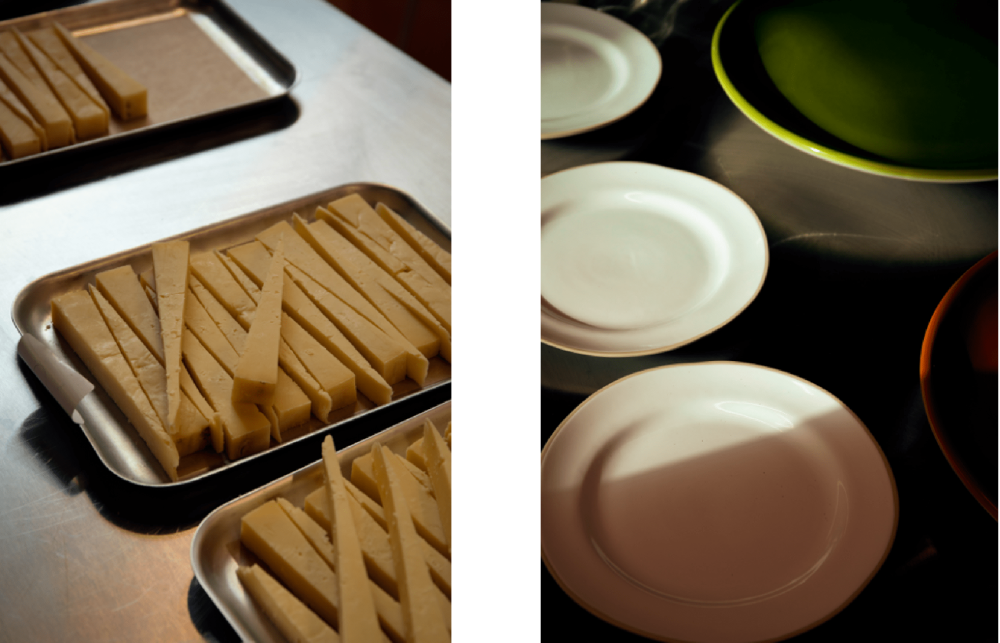
Pictured above, clockwise from top left: a selection of Quicke’s cheeses that were selected because, despite being made just one day apart, express very different flavour and aroma profiles. Plates ready for bread and cheese; wine glasses ready for pouring. Wildpress apple juice is our favourite non-alcoholic drink to serve.
If bread seems too prosaic to require language beyond ‘hard’, ‘soft’, ‘white’, and ‘brown’ to describe, consider how limited you could describe a cheese to someone if you were confined to just its colour and texture. “Distinctions matter,” explained Quicke in our creative studio, citing Helen Keller, the blind and deaf American author and disability advocate, as someone who articulated this well. “She said that before she gained words she lived in a world of pure sensation, a state in which things just happened to her. If you don’t have words, you don’t have the ability to communicate, or create memories or thoughts. As humans we have the unique ability to use words to think about and discuss distinctions in something, which is what makes life interesting.”
Wright echoed the thought of words being crucial to memory and communication. “Gaining words helps a wine linger longer in your memory. But it also gives you the chance to communicate that with someone who hasn’t tasted the wine, even a while after you experienced it. It helps solidify a memory.” She added that developing a vocabulary that is as wide as possible is important, but that it should be relatable to everyone, which is why wine isn’t described as smelling like ‘my childhood home’ but like fruits, spices and herbs.

Picture above, clockwise from top left: Quicke explains her tasting wheel. Rhuaridh Buchanan of Buchanans Cheesemonger, and GAIL’s cheesemonger, introduces the session. Ogen holds up a cross section of a loaf to reveal its crumb, crust and colour variations. Guests are aided by the WSET’s guide to structured wine tasting.
“Gaining words helps a wine linger longer in your memory.”
Joining Quick and Wright was our Master Baker Anomarel Ogen, who pointed out that bread has not had the same language developed around it as wine and cheese because, historically, it has always been thought of as a staple. “But to some degree wine and cheese have been considered staples too, so it can be done,” he said. “The challenge is that bread is a very varied world and if we wanted to put all the attributes that are possible for bread within all cultures, we could develop an encyclopaedia, so learning from how cheese and wine have distilled what matters into structured tasting will help us,” he added.
As each expert led tasting sessions on their respective specialism, some themes emerged that we think are gateways into appreciating the quality of food and wine. Of course, a full appreciation must also include tastings and a discussion of what is flavourfully distinctive about, say, a Sancerre from the Loire Valley versus a New Zealand Sauvignon Blanc, but understanding why something has certain attributes is part of it too. Read on for the three things we think are important drivers of quality.
1. Provenance
It is often said that wine is geography in a bottle. Wine experts speak about the ‘terroir’ (a term for a holistic natural environment) of a vineyard lending distinct aromas, flavour compounds and textures to wine. Proponents of natural wine advocate that terroir should be the sole driver of a wine’s character, with the aim being a pure, unaltered expression of a particular place in a particular year.
Place is also important for cheese, too. “There’s a unique microflora in our maturation store,” Quicke said, “that is not found anywhere else. A research project by Harvard scientists found that each cheesemaker, even if they are using the same starters, has a unique sub-species of yeasts, moulds and bacteria, which will create a distinctive flavour.”
What does this mean for appreciating quality? Should we understand the soil type of each field where wheat is grown and attempt to trace that through to distinct flavours in a loaf? No. It is about being aware that what we eat comes from the ground and adopting an openness to learning about the natural processes – discernible or not – that shape our food. Wine grown in hotter climates will have more sugar, and, therefore, alcohol. Cheese made with pasture-fed cow’s milk and aged in cloth will have more flavour notes than commercially made cheddar. Bread that starts with five varieties of wheat grown in nature-friendly ways will have more complexity and texture. Where something comes from and how it was grown matters.
2. Craft
When you have ingredients that were forged solely by nature – whether grapes, milk or flour – the skill in converting them to food and drink is to unlock the expression they are capable of. Quicke’s milk, which comes from cows that spend most of their lives grazing fields in Devon, could be sent off to a commercial cheesemaker to be homogenised with milk from other sources to produce a consistent-tasting block of cheese day in, day out.
Instead, her cheesemaking is about drawing out the nuances of each batch of milk, which will be shaped by the weather, what the cows ate, the time of year. This is done by turning the milk to cheese by hand in a process Quicke wants to allow the cheesemaker, “the same thing as Michelangelo finding the statue of David in a block of marble. Each time I want our people to be finding that beautiful cheese that sits inside a vat,” said Quicke, “but that beauty will be expressed in different ways every day, which is the point.”
Ogen was quick to draw a comparison to baking: “It’s been proven there is a correlation between the microbes that exist on the baker’s hands and the bread that they make, one that is a two-way street. The microbiota in the starter influences the bakers’ hands; the bakers influence the bread,” he said.
It is not wishy-washy, then, to say that food that’s been made with some contact with the human hand will, in general, have more discernible differences than its commercial counterparts. Appreciating quality must come with the understanding that quality is not static – a 2019 vintage from a non-commercial winemaker will be different from the year before and after, but that’s what makes it interesting.
3. Fermentation and ageing
The thing that unites wine, cheese and bread is that they all undergo a period of fermentation, when microbes are given time to transform either grain, milk or grape juice. This length of this process is known as maturation, and is, in a sense, the thing that unlocks and expresses everything that went before: the terroir of a wine, the skill of the cheesemaker, the work of the farmer to grow robust grains.
With wine, fermentation is crucial to get from grape juice to alcohol, but how it is done – in oak barrels or steel vats, say – will impart different nuances. In craft cheesemaking, such as that which is practised at Quicke’s, milk curds are compacted and cloth-bound before being put in a store so the cheese can interact with the microbes found there over a period of up to two years. In bread making, starter cultures are left to work on the dough, causing it to rise and bringing out the flour’s flavour.
The beauty of a slice of cheese, Quicke explained, is that the maturation process will impart different notes at different parts of the cheese. “Moisture levels are what give distinction, so near the rind there is less moisture and the heart of the cheese will have more, so the enzymatic traces of the starter culture will be concentrated in different ways, which is why you get so much variation in one slice,” she said. “Crust and crumb are caused by the same thing,” said Ogen, “both have to do with how the enzymes behave with different water availability.”
One important distinction to make is the difference between craft and industrial fermentation. As Ogen explained recently, “With craft fermentation, even when done on a large scale, what you are essentially allowing to happen is complexity to emerge.” So, where a commercial winemaker is looking for uniformity in every bottle, a more artisan outfit will accept variation and nuance. “Often, it’s not that lower-quality wines are bad, it’s just there’s not very much interest. You might get one flavour of lemon, say, whereas in a higher-quality wine you will be able to pick out five different notes. The same is true for cheese,” said Wright.
As the afternoon wrapped up, there was a feeling of a world having been opened up through words. We might still be developing the exact language for how to express the different characteristics of bread, but we gained an insight into how we will get there: through conversations and interactions with people like Quicke and Wright, who pass on their knowledge with such enthusiasm that their worlds become both approachable and exciting. Because the point of all of this, surely, is that it makes food more enjoyable, and more interesting. As Quicke concluded, “Words unlock more pleasure, more enjoyment, more living out of their life. Because life is about joy and pleasure.”

